Wild basil identification and control
Information about the noxious weed wild basil. Wild basil is also known by its Latin name, Clinopodium vulgare.
About this weed
Wild basil is a regulated Class B noxious weed in King County. This means that control is required in King County under the state noxious weed law.
Wild basil is known as Clinopodium vulgare. It is in the mint family. Other common names for this plant are cushion calamint, wild savory, field basil, dog mint, and basil savory.
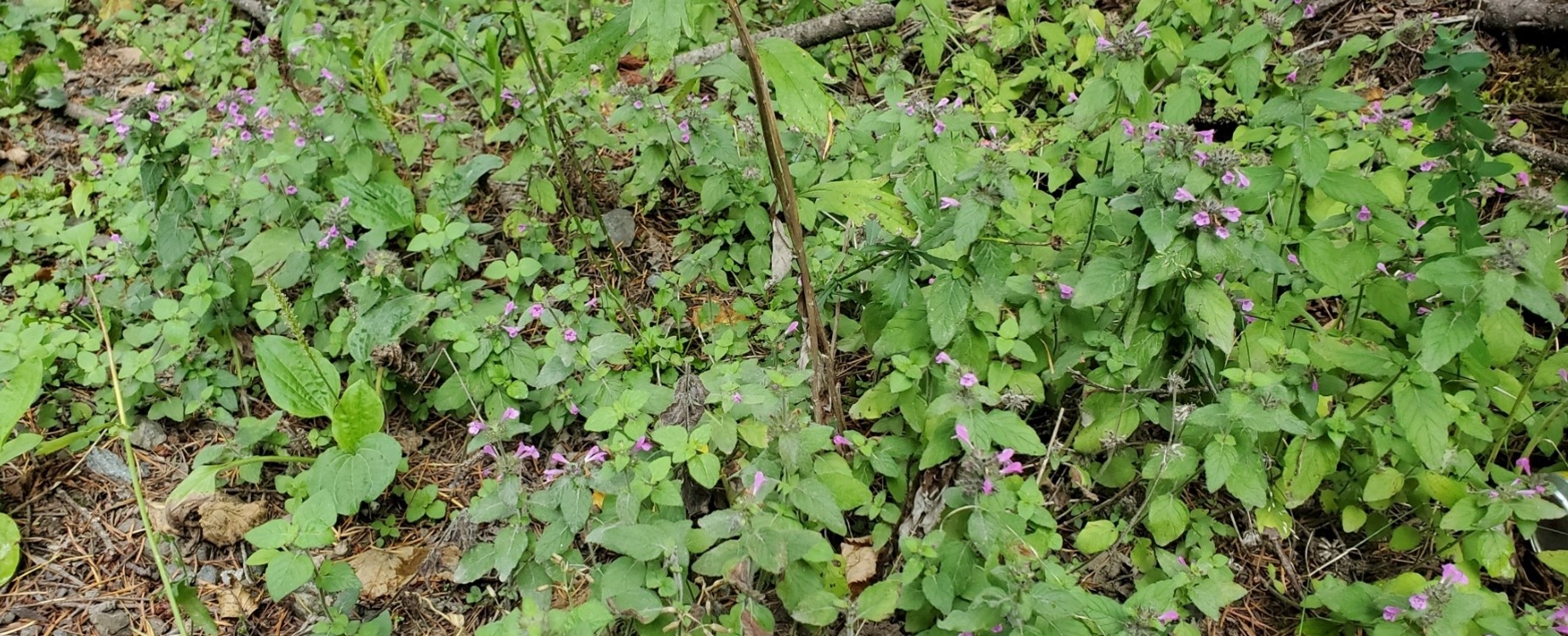
Why it’s a problem
Wild basil displaces native and beneficial plants by quickly outcompeting them and forming a monoculture (landscape filled with one species of plant) in Washington state. It creates dense stands in forests, grassy areas, disturbed areas, and along rights-of-way. It outcompetes beneficial plants in dry, shady forest in King County.
Plant description
Wild basil is a perennial plant (2 or more years life span) with upright, hairy stems that end with clusters of pink to purple flowers up to 20 inches tall.
Flowers are borne in head-like clusters at the tip of the plant and/or ringing around the stem above where ordinary leaves are attached (axils). When flowers fall off in the fall, they leave behind clusters of stiff, hairy sepals (modified leaves found at the base of each flower head) that assist fall and winter identification.
Wild basil is hairy on both the stem and leaves (undersides and margins). On more established plants, it can sometimes have rounded teeth at the base of ovate leaves.
Each plant has creeping, horizontal stems and roots that form new roots at points (nodes) to create networks of new plants. It can reproduce this way or by seed.
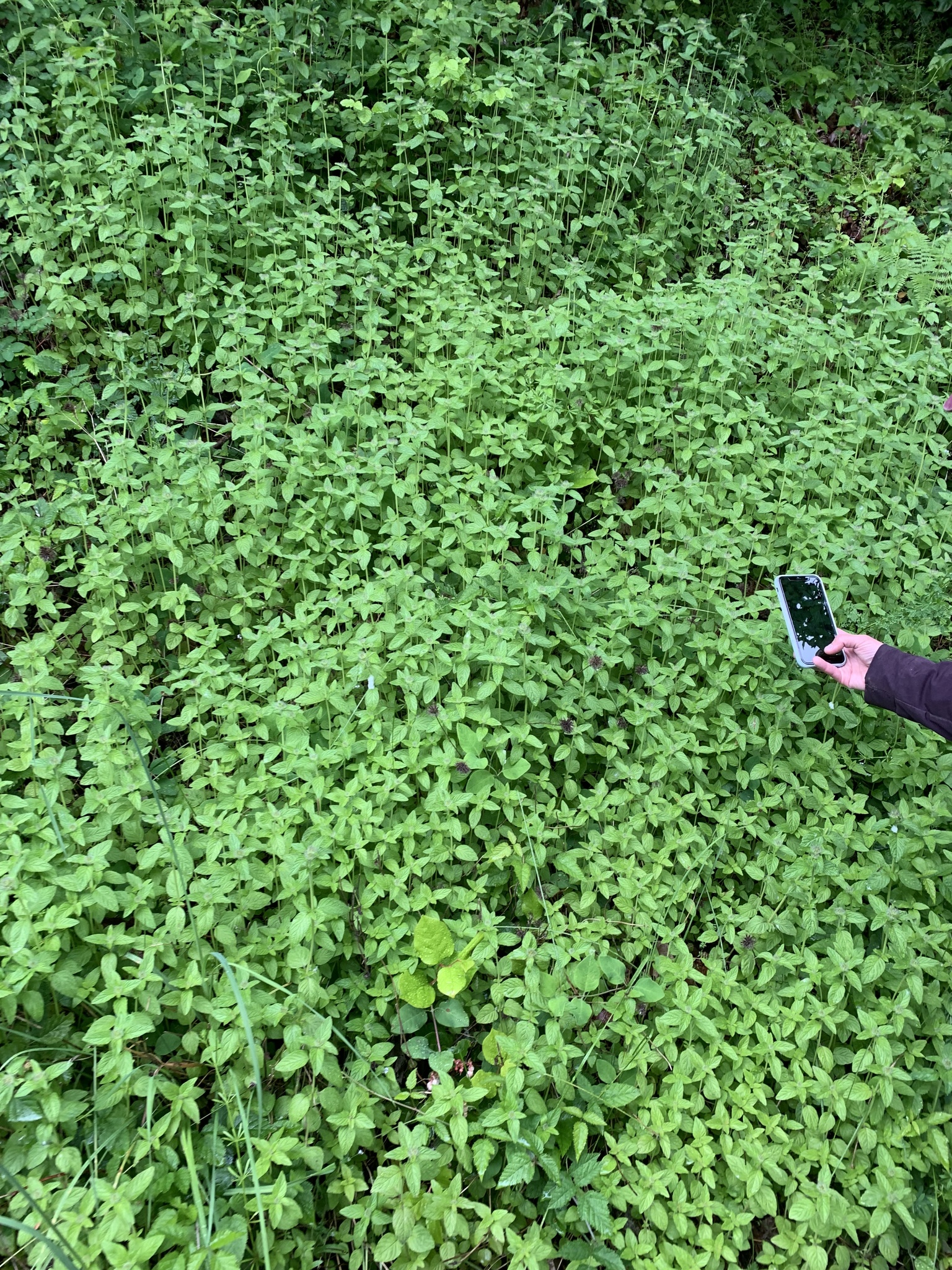
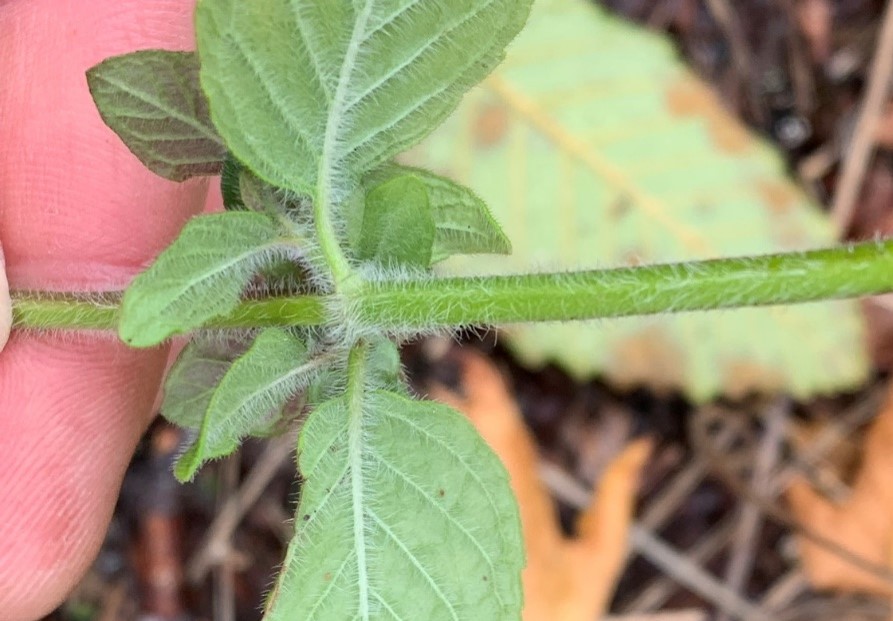
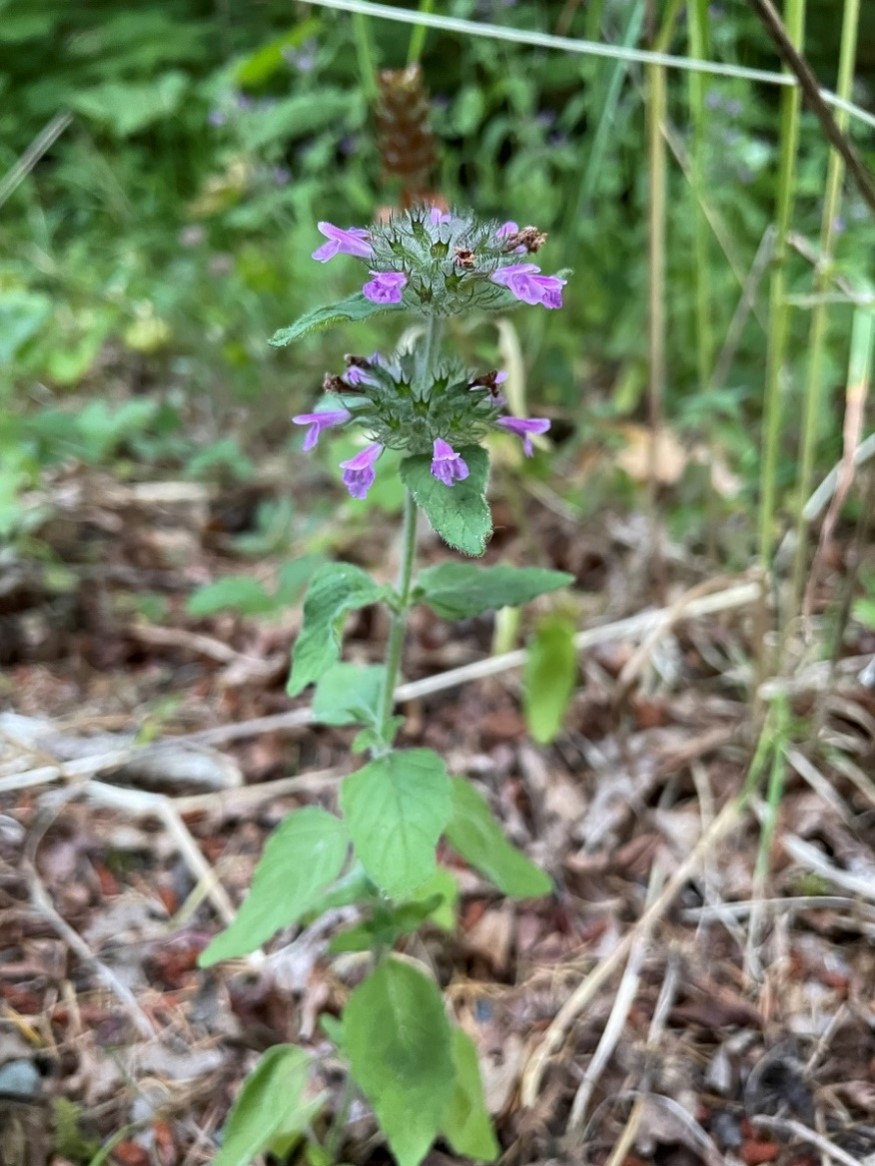
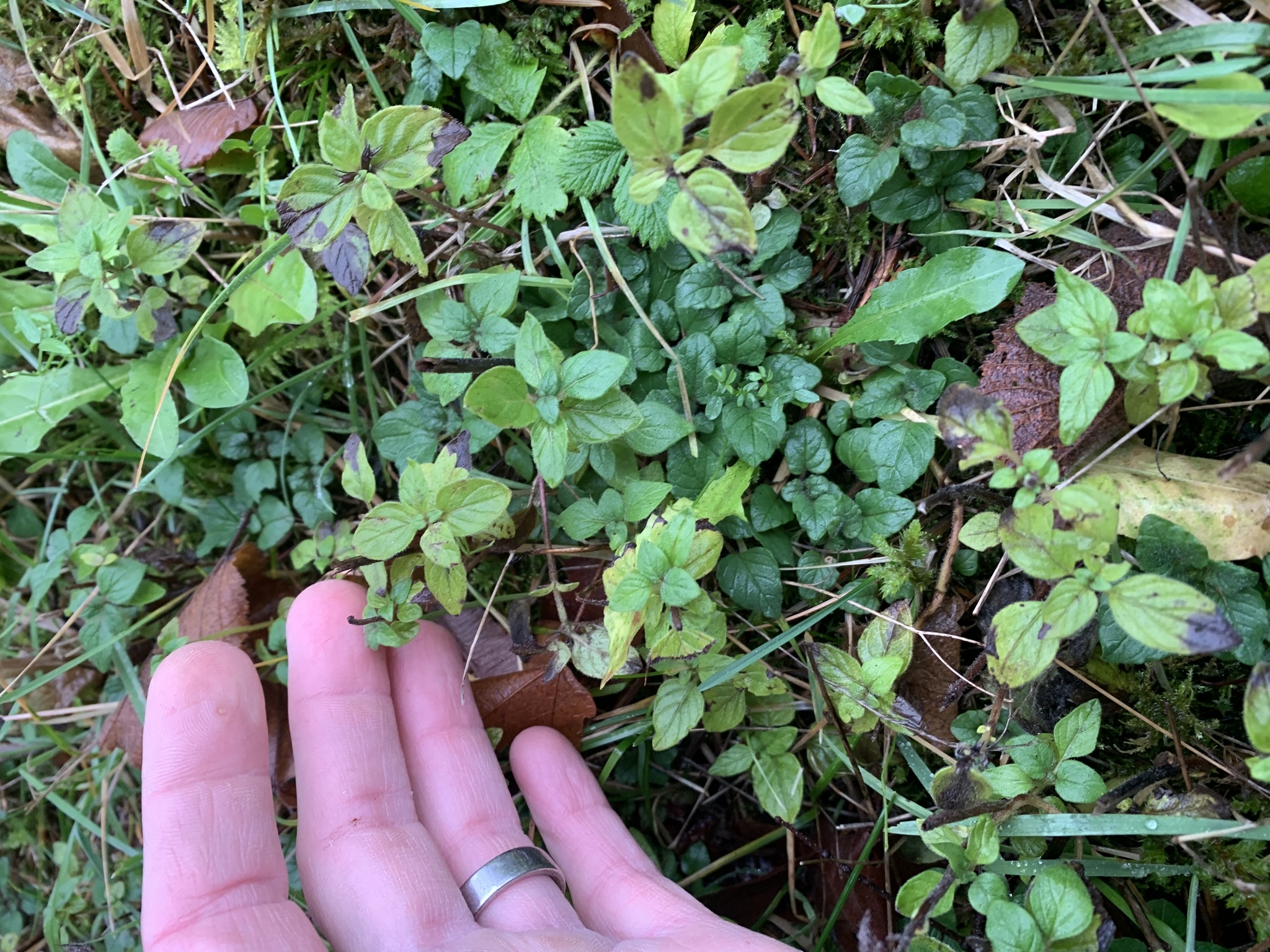
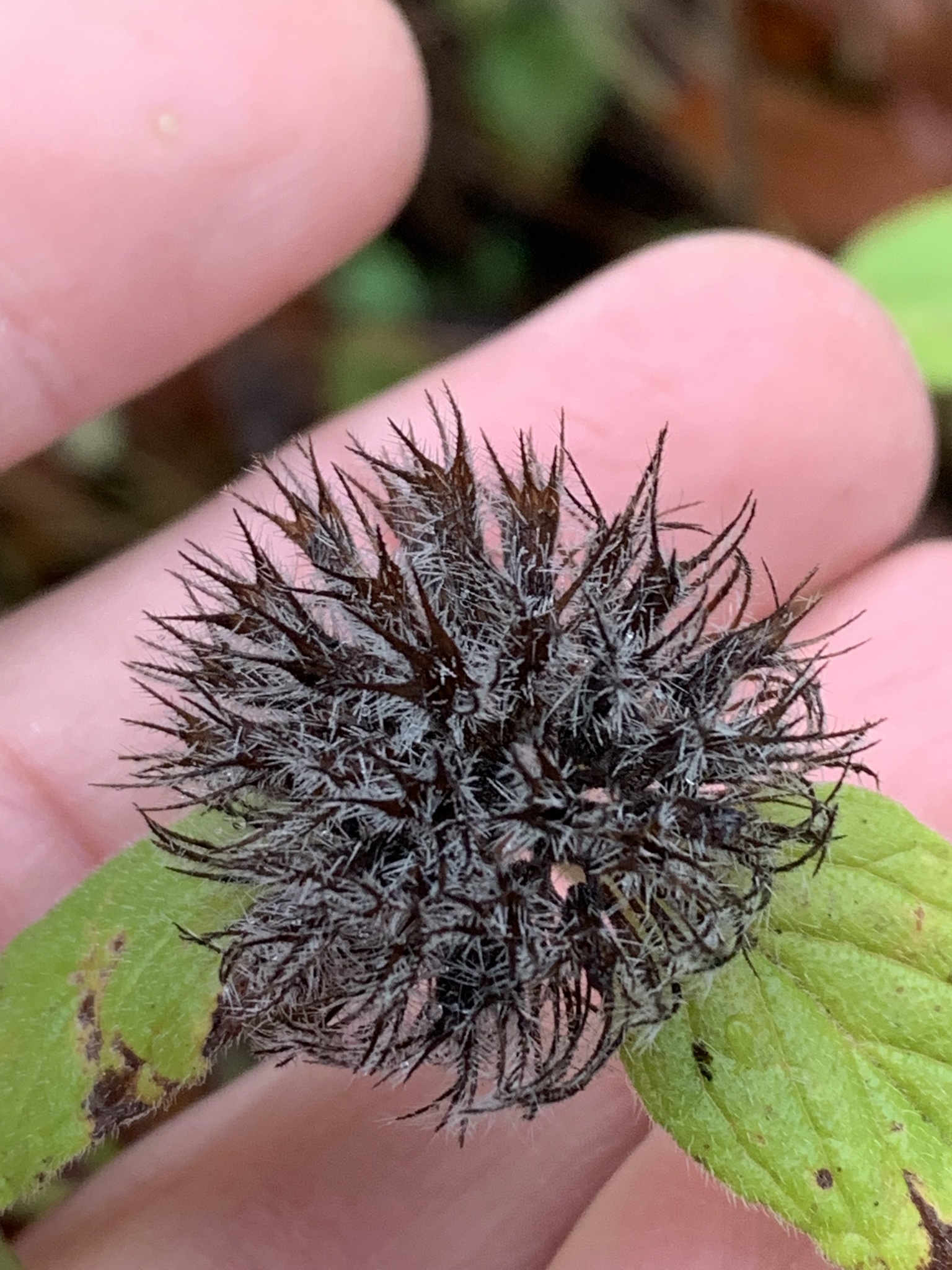
Be aware of look-alike plants
Glechoma hederaceae (ground ivy)
Clinopodium douglasii (yerba buena)
When in doubt, take photos and share them with us or report them on iNaturalist.
What to do if you find it
Property owners are required to control wild basil on lands that they manage. Please notify us if you see wild basil growing in King County. Our program staff can provide the property owner or appropriate public agency with site-specific advice on how best to remove it. We map all known locations of regulated noxious weeds to help locate new infestations in time to control them.
Control methods
We recommend using a combination of methods to control noxious weeds. In areas with few weeds, it is important to act quickly before they become harder to control. Make a long-term plan as it often takes several years to get rid of most weeds. Start in the least infested areas first and then move into more heavily infested areas.
Manual control
Manual removal is labor intensive, but effective if horizontal roots (rhizomes) and horizontal stems (stolons) are removed. Mature plants have a short horizontal stem at ground level and extensive, brittle horizontal roots that can break off easily and continue to grow and form new plants if not all of it is removed. Pull or dig out and remove all root and shoot runners.
Mechanical control
Mowing is not effective and may spread more vegetative parts further that can form new plants.
Chemical control
Stay safe when using herbicide:
- Always read the label before use.
- Wear a long-sleeved shirt, long pants, shoes, and eye protection.
- Follow state and local regulations.
Manual control combined with herbicide is effective. Herbicide also works well for large patches. For better results, apply twice: once in spring and again in fall on regrowth. Use a selective broadleaf herbicide. Products with the active ingredient Triclopyr, Aminopyralid, or 2,4-D work well.
Disposal instructions
Dispose of entire plant in garbage/landfill because plant reproduces from seed and root fragments.
Noxious Weed Disposal - Washington State Noxious Weed Control Board

 Translate
Translate